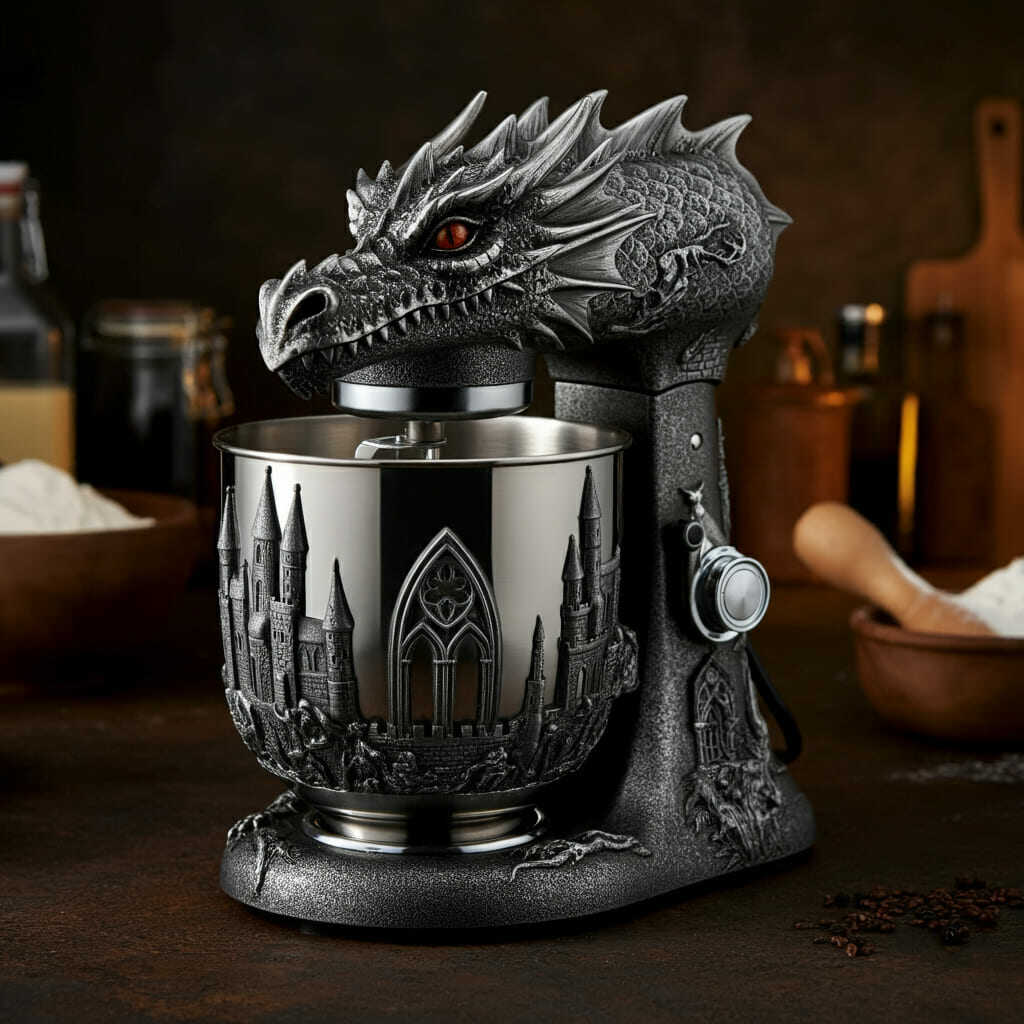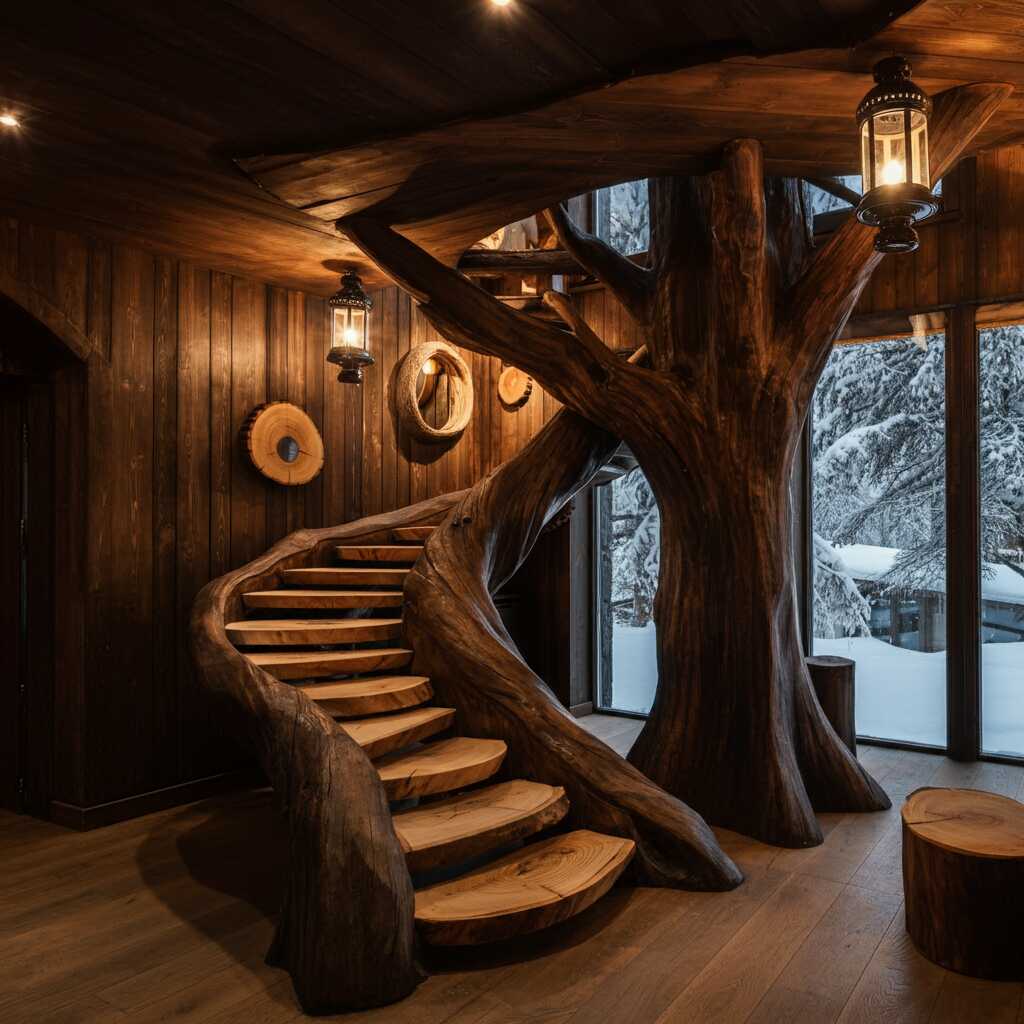In the realm of interior design, few pieces evoke as much awe and fascination as the dragon bed. This unique fusion of mythology and craftsmanship transforms an everyday object—a bed—into a statement of artistry, symbolism, and personal identity. The dragon bed , with its intricate carvings, sweeping forms, and imaginative motifs, represents more than just a place to rest; it embodies the enduring power of mythological imagery in human culture.
Dragons have long captivated the imaginations of people across civilizations. In Eastern traditions, they symbolize wisdom, strength, and prosperity, while in Western lore, they often represent danger, conquest, and transformation. Regardless of cultural interpretation, dragons are universally seen as creatures of immense power and mystery. It is no wonder, then, that designers have sought to incorporate these mythical beings into furniture—especially into something as intimate and essential as a bed.
This article delves deeply into the world of the dragon bed , exploring how its design reflects both artistic expression and symbolic meaning. We will examine the historical roots of dragon iconography in furniture, analyze the structural and aesthetic elements that define a dragon bed, and consider how such a piece influences the space it inhabits. Through this exploration, we aim to uncover the deeper significance behind the allure of the dragon bed—not merely as a decorative item, but as a vessel of storytelling, comfort, and cultural resonance.

Part I: The Origins and Symbolism of the Dragon in Furniture Design
Dragons Across Cultures
To understand the appeal of the dragon bed , one must first appreciate the role dragons play in global mythology. From the Chinese Lung to the Norse Fafnir, dragons have been central figures in folklore for centuries. These creatures often embody dualities—both creation and destruction, chaos and order, terror and protection. Their presence in stories, from ancient epics to modern fantasy novels, has cemented their status as timeless symbols of human aspiration and fear.
In many Asian cultures, particularly in China and Japan, dragons are revered as celestial beings associated with water, weather, and imperial authority. The dragon motif was frequently used in royal architecture, clothing, and ceremonial objects. In contrast, European dragons were often depicted as malevolent beasts, guarding treasures or terrorizing villages, only to be slain by brave heroes. These differing portrayals influenced how dragons were incorporated into decorative arts, including furniture.
Early Appearances in Furniture
The use of dragon motifs in furniture can be traced back to the Ming and Qing dynasties in China, where carved wooden beds and thrones featured elaborate dragon designs. These pieces were not only functional but also deeply symbolic, signifying power, longevity, and divine favor. In Europe, during the Gothic and Baroque periods, dragons appeared on ornate cabinets, chairs, and bed frames, often stylized to reflect the dramatic aesthetics of the time.
What is fascinating about the evolution of dragon-themed furniture is how each culture adapted the image to fit its own values and artistic sensibilities. Whether through serpentine curves or fierce visages, the dragon became a versatile motif capable of expressing both grandeur and mystique.
Symbolic Meaning in Bedroom Design
A bed adorned with dragon imagery carries layered meanings. In some contexts, it may suggest protection—dragons as guardians watching over the sleeper. In others, it might convey ambition, evoking the dragon’s hoarding of treasure and its association with wealth and success. For many, the dragon bed becomes a personal talisman, representing inner strength or a connection to ancestral myths.
Designers who create dragon beds often tap into these symbolic associations, crafting pieces that are not only visually stunning but also emotionally resonant. A dragon bed is not simply a sleeping surface—it is a narrative, a guardian, and a work of art rolled into one.
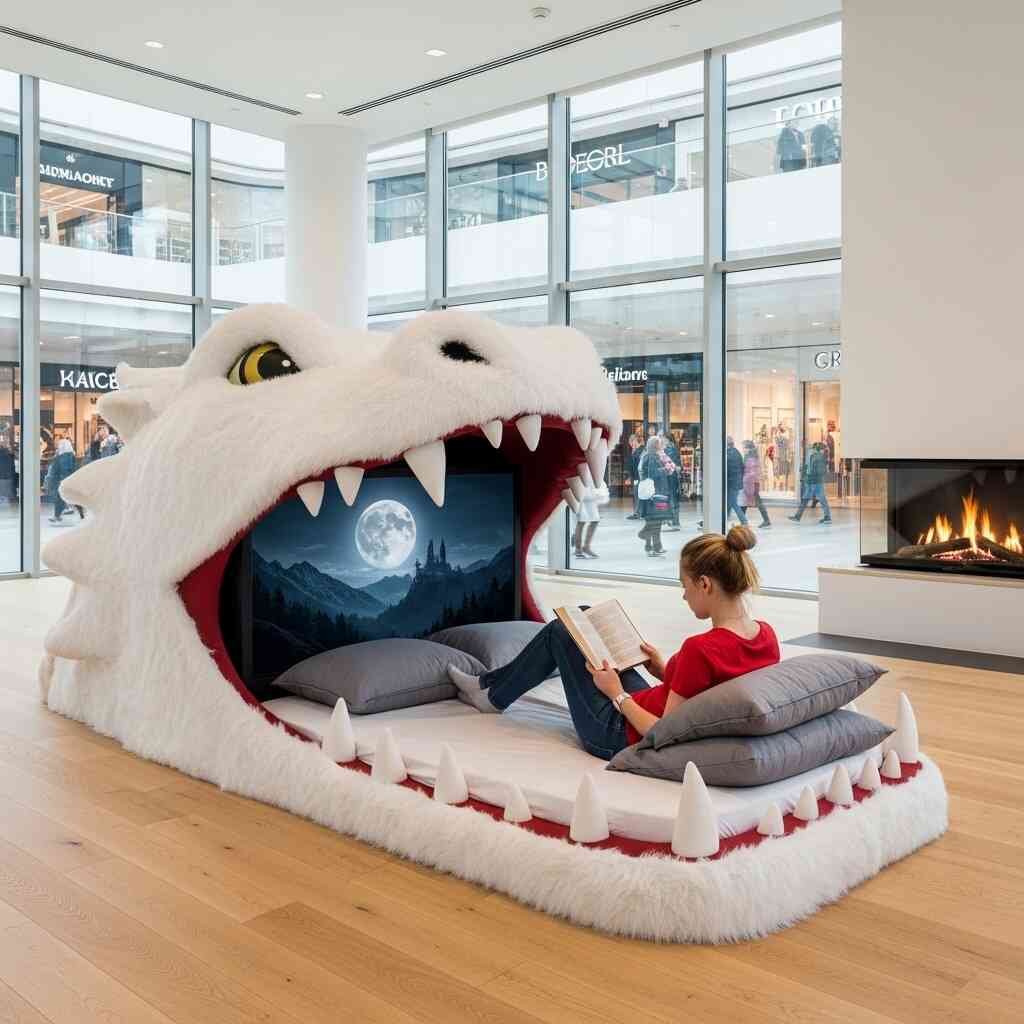
Part II: The Anatomy of a Dragon Bed – Structure, Materials, and Craftsmanship
Frame Design and Construction
At the heart of any dragon bed is its frame—a structure that must balance functionality with artistic flair. Unlike standard bed frames, which prioritize minimalism and ergonomics, dragon beds are designed to stand out. The headboard and footboard often feature sculptural elements that mimic the dragon’s form: coiled tails, arched necks, clawed feet, and menacing faces.
Craftsmen typically begin by sketching detailed blueprints that outline how the dragon’s anatomy will translate into furniture. The challenge lies in ensuring that the dragon’s features do not compromise the structural integrity of the bed. Reinforcements are carefully integrated into the design, allowing the piece to remain sturdy while maintaining its visual drama.
Wood is the most common material used in constructing dragon beds, especially hardwoods like oak, mahogany, and walnut, which lend themselves well to carving and finishing. However, some contemporary versions may incorporate metalwork or mixed media, blending traditional craftsmanship with modern techniques.
Carving Techniques and Detailing
The true magic of a dragon bed lies in its detailing. Skilled artisans spend countless hours hand-carving the dragon’s scales, eyes, teeth, and wings, ensuring that every element contributes to the overall sense of movement and life. These details are not just decorative—they serve to enhance the emotional impact of the piece.
Carvers often draw inspiration from both natural reptilian forms and classical dragon depictions found in literature and art. Some styles lean toward realism, with textured skin and anatomically accurate limbs, while others embrace abstraction, using flowing lines and exaggerated features to evoke the essence of a dragon rather than its literal appearance.
Painting and staining further enhance the visual depth of the carvings. Darker finishes may emphasize the dragon’s ferocity, while lighter tones can highlight its elegance and grace. Gilding—applying gold leaf to certain areas—is sometimes used to signify regality or divinity, making the bed feel almost otherworldly.
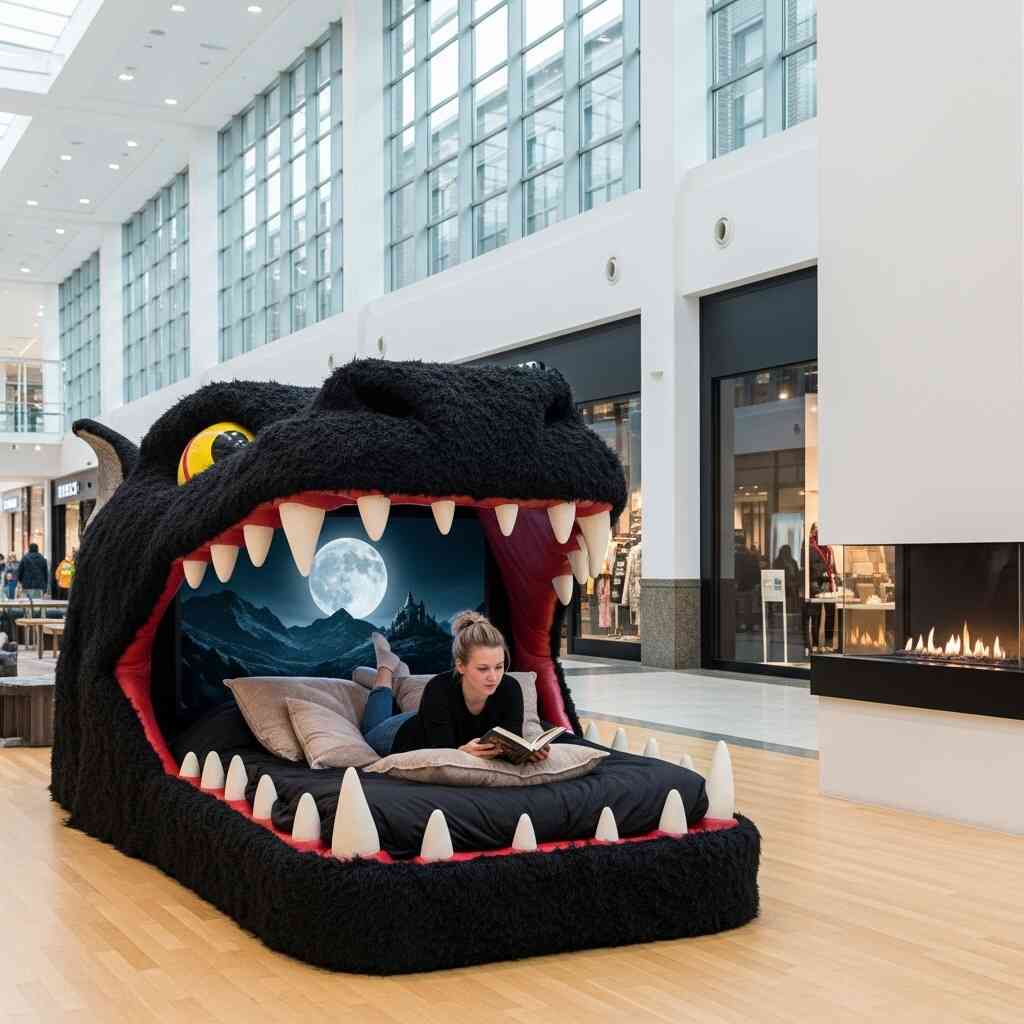
Upholstery and Soft Elements
While the wooden framework defines the dragon bed’s silhouette, the upholstery plays a crucial role in comfort and texture. Mattresses, cushions, and fabric coverings must complement the boldness of the design without overpowering it. Velvet, brocade, and silk are popular choices, offering rich textures that echo the opulence of the dragon’s legendary treasure hoard.
Color schemes often reflect the symbolic intent of the design. Deep reds and blacks may evoke power and mystery, while blues and greens can suggest wisdom and nature. In some cases, embroidery or appliqué is used to incorporate additional dragon motifs into the bedding itself, creating a cohesive theme throughout the sleeping environment.
Lighting and Placement Considerations
Because of their size and complexity, dragon beds require thoughtful placement within a room. Lighting becomes an essential factor in showcasing the intricacies of the design. Strategically placed lamps or wall sconces can accentuate the dragon’s curves and textures, casting shadows that bring the sculpture to life.
In larger bedrooms, the dragon bed can serve as a focal point, drawing attention immediately upon entering the space. In smaller rooms, careful planning is needed to ensure the bed does not overwhelm the area. Designers often recommend pairing the bed with minimalist decor to allow it to shine without competing for attention.
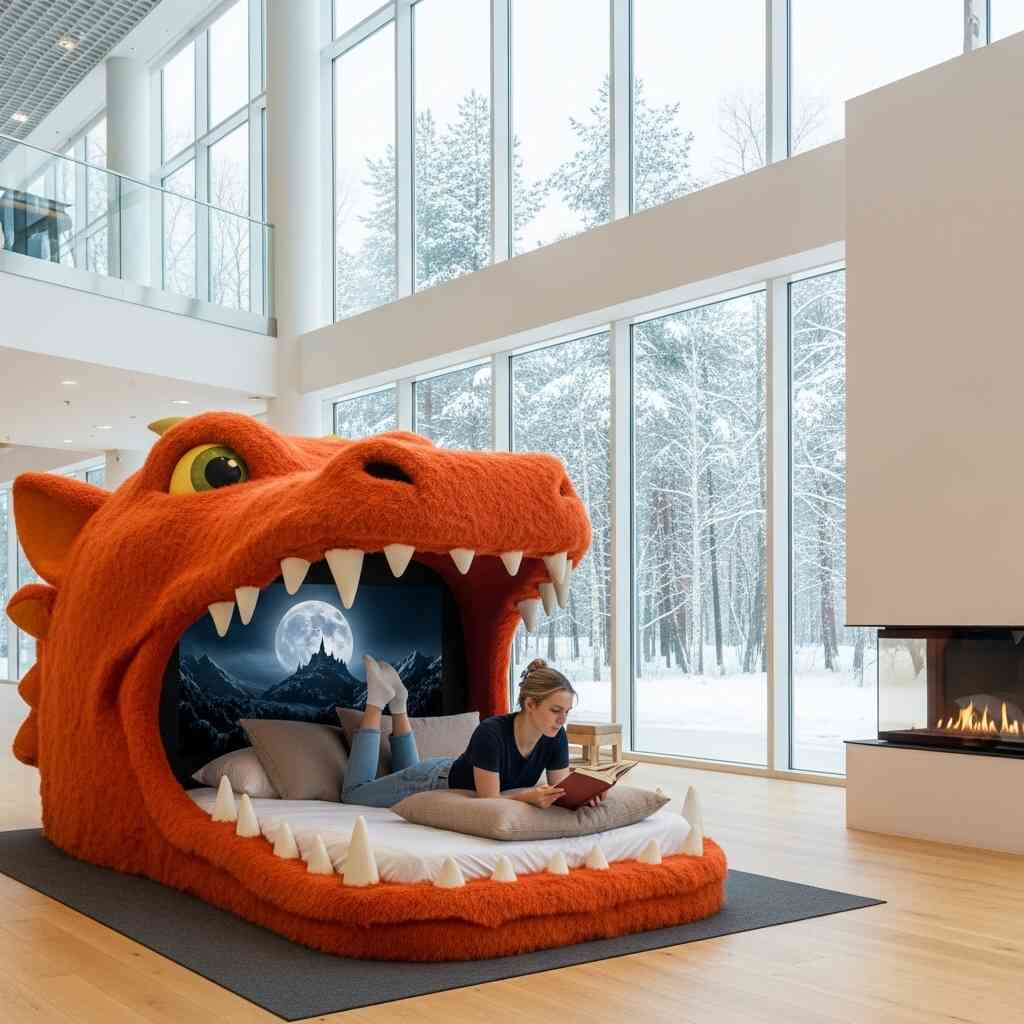
Part III: The Cultural and Psychological Impact of a Dragon Bed
Interior Design Philosophy
From an interior design perspective, a dragon bed challenges conventional notions of what bedroom furniture should be. While modern trends often favor clean lines and neutral palettes, the dragon bed embraces ornamentation, storytelling, and individuality. It invites homeowners to think beyond utility and consider how their furniture expresses their personality and values.
Interior designers who incorporate dragon beds into their projects often do so with the intention of creating a bold statement. Such a piece can transform a generic bedroom into a sanctuary of imagination and creativity. It encourages occupants to engage with their surroundings on a deeper level, inviting them to dream and reflect.
Moreover, the dragon bed fits seamlessly into eclectic or maximalist design styles, where layering patterns, textures, and themes creates a rich sensory experience. It can also be integrated into themed spaces—such as libraries, game rooms, or meditation corners—that celebrate mythology, fantasy, or history.
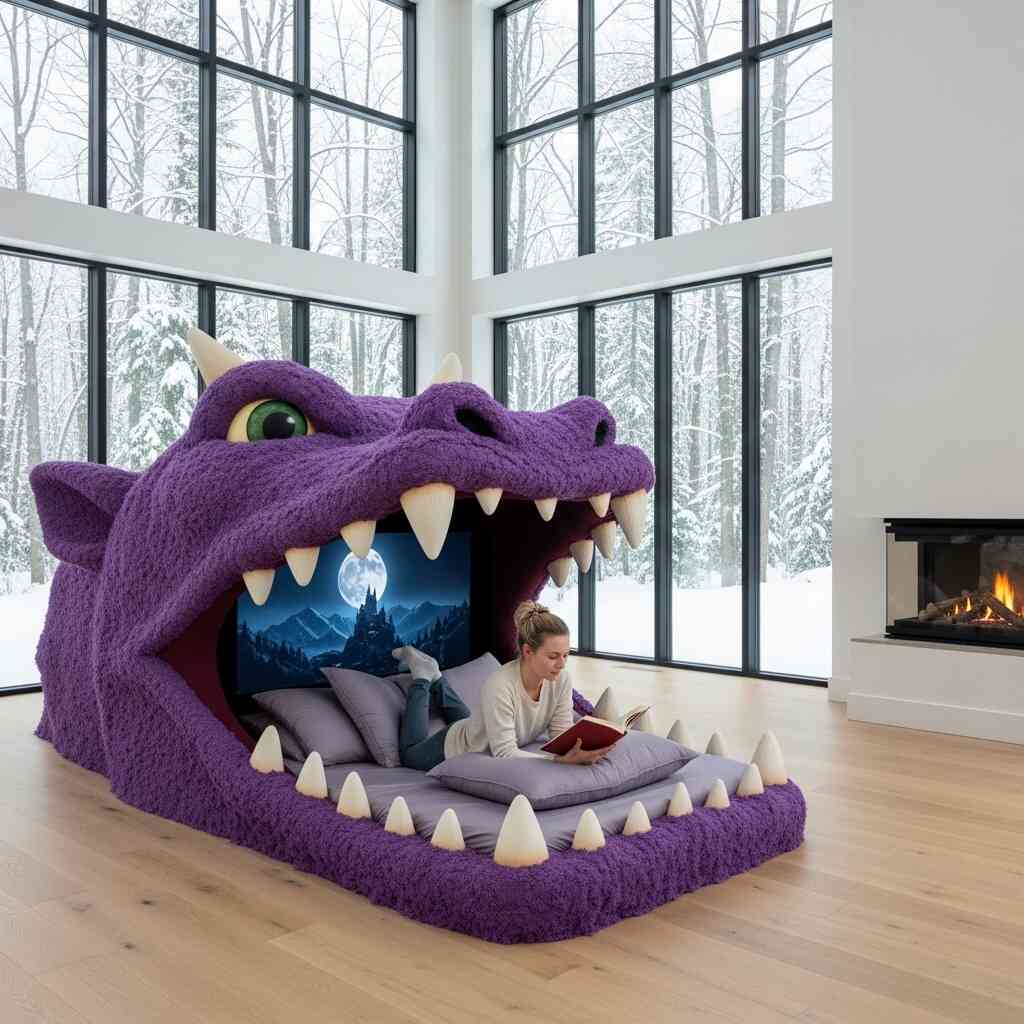
Emotional and Psychological Effects
Beyond aesthetics, the dragon bed has a profound psychological impact. Sleep environments significantly influence our mental state, and the presence of a powerful, protective symbol like a dragon can foster feelings of safety and empowerment.
For children and adults alike, a dragon bed can spark imagination and curiosity. It transforms bedtime into a journey, where falling asleep feels like entering a storybook world. This effect is particularly strong in individuals who have a personal connection to dragons through literature, film, or family heritage.
Psychologically, the dragon represents both the shadow self and the potential for growth. Jungian theory suggests that confronting the dragon—whether in dreams or in art—can lead to self-discovery and transformation. In this context, a dragon bed may serve as a nightly reminder of one’s inner strength and capacity for change.
Personal Expression and Identity
Perhaps the most compelling aspect of the dragon bed is its ability to reflect the owner’s identity. Choosing to sleep beneath the watchful gaze of a dragon is a declaration of one’s interests, beliefs, and creative spirit. It signals a willingness to embrace the fantastical, to honor tradition while reinterpreting it in a personal way.
In a world increasingly dominated by mass-produced goods, the dragon bed stands out as a celebration of uniqueness. Each piece tells a different story, shaped by the hands of the artisan and the vision of the owner. Whether inspired by Eastern dragons soaring through clouds or Western beasts guarding ancient secrets, every dragon bed is a testament to the enduring power of myth in our lives.
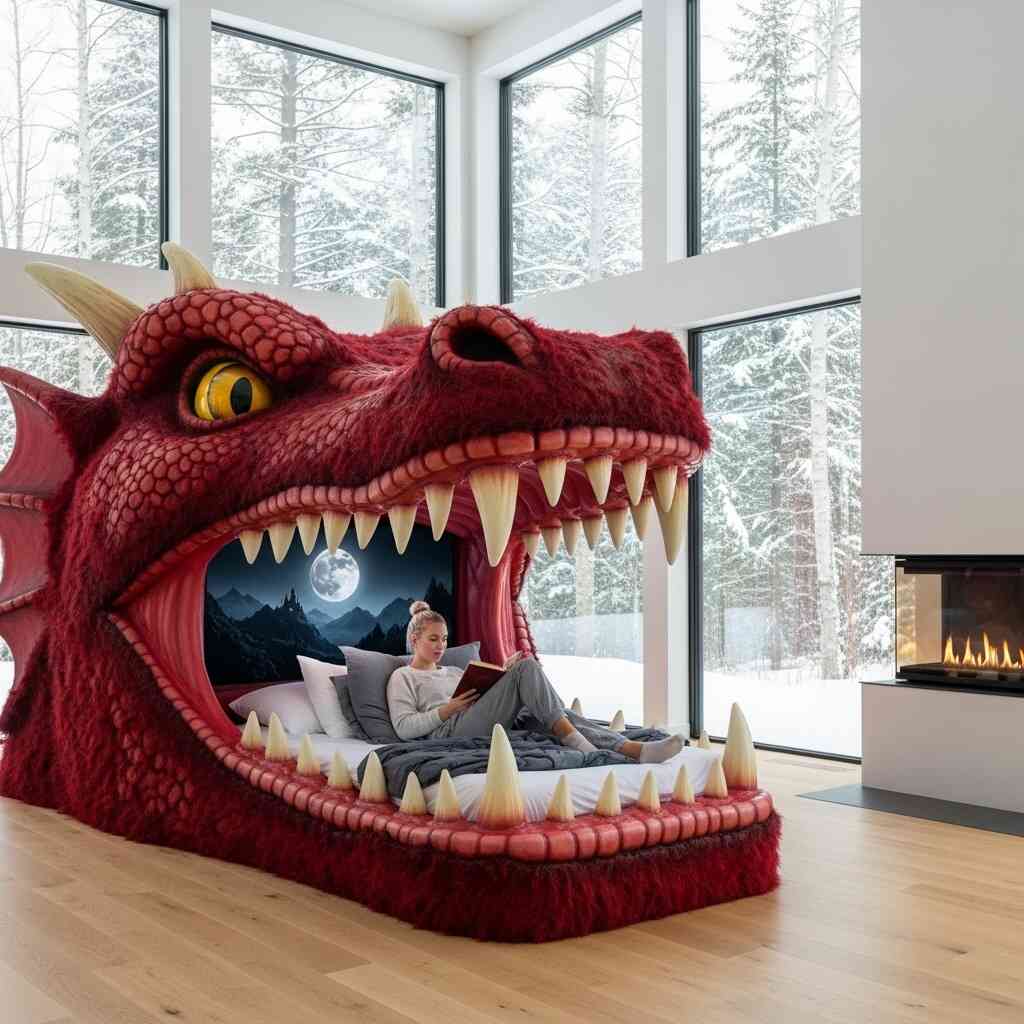
Conclusion
The dragon bed is far more than a piece of furniture—it is a bridge between the tangible and the mythical, the functional and the fantastical. Its design encapsulates centuries of cultural storytelling, artistic craftsmanship, and personal meaning. By integrating the dragon into the very space where we rest and dream, we invite its energy into our daily lives, reminding ourselves of the strength, mystery, and wonder that reside within us all.
As interior design continues to evolve, the dragon bed remains a timeless symbol of creativity and courage. It challenges us to reimagine our living spaces not just as places of comfort, but as realms of possibility. In choosing a dragon bed, one does not simply select a place to sleep—one chooses to live surrounded by legend, to awaken each day under the gaze of a creature that has watched over humanity for millennia.
Ultimately, the dragon bed is a celebration of the imagination, a tribute to the enduring allure of myth, and a deeply personal expression of identity. It reminds us that even in the quiet moments of our lives, when we close our eyes and drift into dreams, we are never truly alone. Somewhere above us, a dragon watches—and with it, the magic of the past lingers on.
